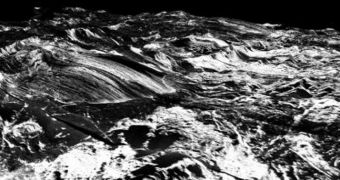It's a known fact that the middle of the Atlantic Ocean is actually a huge ridge, which constantly generates new crust under the waters. The existing crust bulges outwards, while magma pours in from the upper layers of the mantle, solidifying as it does so, in a never-ending cycle. The ridge is the same that first separated the single continent which adorned the face of the planet in two, thus creating the plate containing the Americas and another one holding what would later become Europe, Asia, Africa, and Australia. But the ridge also features a number of peculiar structures, called oceanic pore complexes.
These structures are nothing more than large elevated massifs, with weirdly-curved surface, either flat or gently rounded, and sporting megamullions, a type of prominent congruations. The birth, evolution, and death of these formations are determined entirely by the long-term variations in the levels of volcanic activity recorded at their respective sites. The explanation belongs to Dr Bram Murton, a geologist at the National Oceanography Center, in Southampton, the United Kingdom.
He is also a participant in the 2007 expedition to study OPC, which sailed across the mid-Atlantic Ridge aboard the royal research ship RRS James Cook. The main goal of the expedition was to analyze the crust of our planet, kilometers beneath the ocean's surface. “We wanted to know why some faults develop into core complexes, whereas others don't. It had been suggested that core complexes form during periods of reduced magma supply from volcanism, but exactly how this would interact with the tectonic forces that deform the Earth's crust was unclear,” the scientist says.
During the investigations, the team managed to discover three masiffs, which they succeded to dredge and then drill through. Identifying the structure was only made possible by employing the TOBI deep-towed vehicle, an explorations robot which was equipped with highly-advanced sonar equipment, allowing it to profile the very bottom of the ocean. “These massifs turned out to be oceanic core complexes at different stages of a common life cycle. By comparing them we are able to get a much better understanding of the birth, evolution and death of these fascinating geological features,” Murton reveals.
“Core complex development may take a million years or so and is associated with suppressed or absent volcanism .We believe that renewed or increased volcanism is what eventually terminates the process of core complex formation,” the expert concludes.

 14 DAY TRIAL //
14 DAY TRIAL //